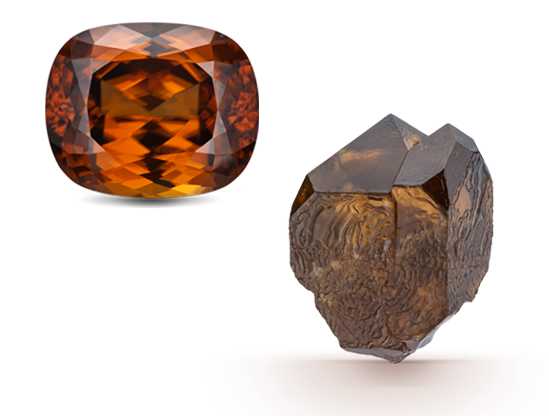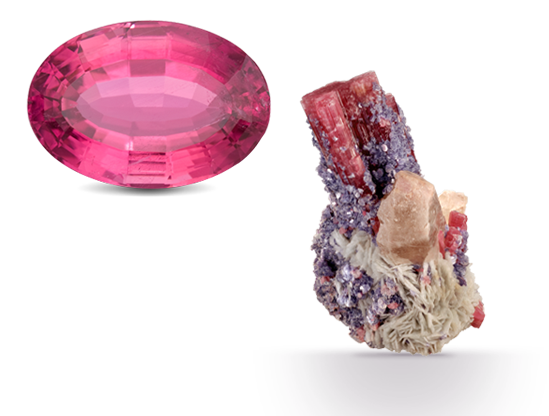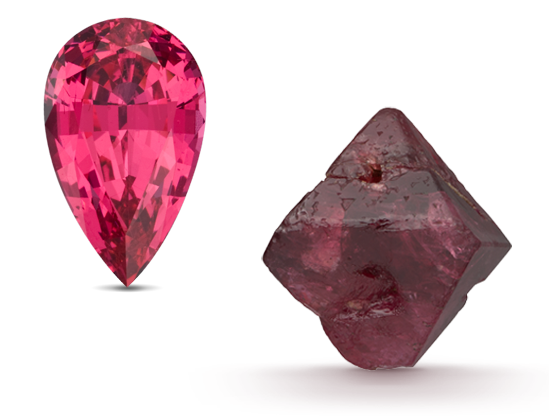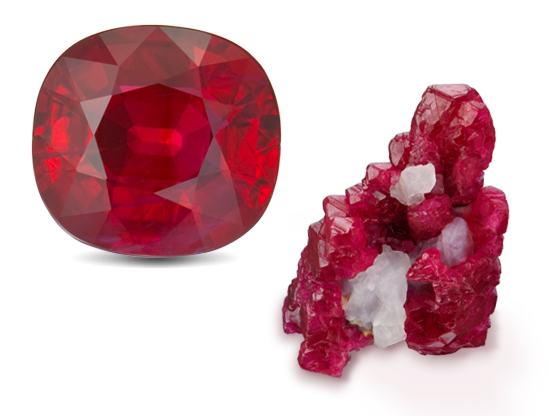Zircon is a colorful gem with high refraction and fire that’s unfairly confused with cubic zirconia


Zircon is a colorful gem with high refraction and fire that’s unfairly confused with cubic zirconia

Turquoise is found in only a few places on earth: dry and barren regions where acidic, copper-rich groundwater seeps downward and reacts with minerals that contain phosphorus and aluminum. The result of this sedimentary process is a porous, semitranslucent to opaque compound of hydrated copper and aluminum phosphate. 4,000 BC Turquoise buried in Ancient Egyptian tombs is among the world’s…

Tourmaline’s colors have many different causes. It’s generally agreed that traces of iron, and possibly titanium, induce green and blue colors. Manganese produces reds and pinks, and possibly yellows. Some pink and yellow tourmalines might owe their hues to color centers caused by radiation, which can be natural or laboratory-induced. 1554 Francisco Spinoza’s expedition discovers “Brazilian emerald”: the first recorded…

Topaz actually has an exceptionally wide color range that, besides brown, includes various tones and saturations of blue, green, yellow, orange, red, pink, and purple. Colorless topaz is plentiful, and is often treated to give it a blue color. Topaz is also pleochroic, meaning that the gem can show different colors in different crystal directions. 1768 The royal court in…

Found in just one place on earth, tanzanite is a relatively recent discovery. Tiffany & Co named this blue-violet variety of zoisite in honor of Tanzania, where it was first unearthed in 1967. Because the crystals show different colors depending on the viewing direction, cutters can fashion gems with a range of color from violetish blue to bluish violet depending…

Sunstone is a member of the feldspar group. Both the orthoclase and the plagioclase feldspar species boast a sunstone variety. Other feldspar group gems include moonstone, non-phenomenal orthoclase, phenomenal and non-phenomenal labradorite, and amazonite. Sunstone from Oregon is gaining attention as a natural and untreated product of the United States. Feldspar Sunstone is a member of the feldspar group of…

Until recently, spinel was an underappreciated gem with little consumer recognition. Increasing demand for ruby alternatives rekindled appreciation for spinel’s rich red color and history. In ancient times, southeast Asia’s mines yielded exceptional large spinel crystals, which became the treasured property of kings and emperors, often passing through many hands as spoils of war. Nat Thwe Spinel crystals are so…

Besides blue sapphire and ruby, the corundum family also includes so-called “fancy sapphires.” They come in violet, green, yellow, orange, pink, purple, and intermediate hues. Some stones exhibit the phenomenon known as color change, most often going from blue in daylight or fluorescent lighting to purple under incandescent light. Sapphires can even be gray, black, or brown. Kashmir Intensely saturated…

Rubies can command the highest per-carat price of any colored stone. This makes ruby one of the most important gems in the colored stone market. In its purest form, the mineral corundum is colorless. Trace elements that become part of the mineral’s crystal structure cause variations in its color. Chromium is the trace element that causes ruby’s red color. Ratnaraj…

The color of rose quartz ranges from very light pink (almost white) to medium-dark pink. The most appealing color typically occurs in larger sizes; small rose quartz specimens with good color tend to be scarce. Rose quartz is usually found in massive form, so well-shaped crystals are highly prized. Delicate color The deepest colors often occur in large sizes; small…

The ancient Egyptians mined peridot on the Red Sea island of Zabargad, the source for many large fine peridots in the world’s museums. The Egyptians called it the “gem of the sun.” Today this gem is still prized for its restful yellowish green hues and long history. Large strongly-colored, examples can be spectacular, and attractive smaller gems are available for…

Perhaps the best-loved gems of all time, pearls—natural and cultured—occur in a wide variety of colors. The most familiar are white and cream, but the palette of colors extends to every hue. Natural pearls form around a microscopic irritant in the bodies of certain mollusks. Cultured pearls are the result of the deliberate insertion of a bead or piece of…